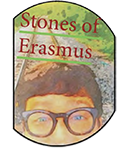$3
Group Work Self-Evaluation Form ELA & Reading Student Assessment Tool 6-12
Stop your students' group work before the bell rings. Give at least three minutes to have the groups debrief. Then, have students self-evaluate their performance. Doing a metacognitive reflection at the end of an activity not only helps build accountability in your classroom but is a healthy way for students to reflect and provide you with a formative assessment of what they accomplished that day. Ensure your students have participated effectively in collaborative discussions (one-on-one, in groups, and teacher-led) with diverse partners on middle and high school-related topics, texts, and issues, building on others' ideas and expressing their own clearly and persuasively. You got this.
What's Included Right Out of the Box:
- 1 Teacher Guide for Using this Resource with Students
- Includes both PDF and Google Workspace
- 2 Self-Evaluation Forms for Group Work
- Self-evaluation with Linear Scale Questions
- Google Form Self-Evaluation for Group Work
- Standards Alignment Chart for Planning
- Bonus: Note-taking template
Why Use Self-Evaluations in the English Language Arts Classroom?
Students think teachers use evaluations in the classroom to make kids better speakers and listeners! That's not exactly true. Better speakers and listeners come from good instruction, practice, and repetition in the classroom! You're doing that already. So give yourself (Teachers!) a pat on the back. What's good about evaluations that you give students to fill out is that it makes students more accountable for what they are doing in their classroom. It reminds students that speaking and listening is a skill they are being evaluated on, not just a passive activity that "happens." Finally, doing evaluations in your classroom with students sets the tone for the class and establishes a routine. It also helps you collect data on your students and allows you to see how they are performing (or not performing) quickly.
- Students need to see these standards first modeled by you, the teacher.
- Spend significant time drilling these routines with your students at the beginning of the school year.
- Provide concrete steps for the student to evaluate themselves and others.
- Give a grade in your grade book for evaluations so students know it counts toward their overall performance in your class.
© 2022-2025 stonesoferasmus.com
